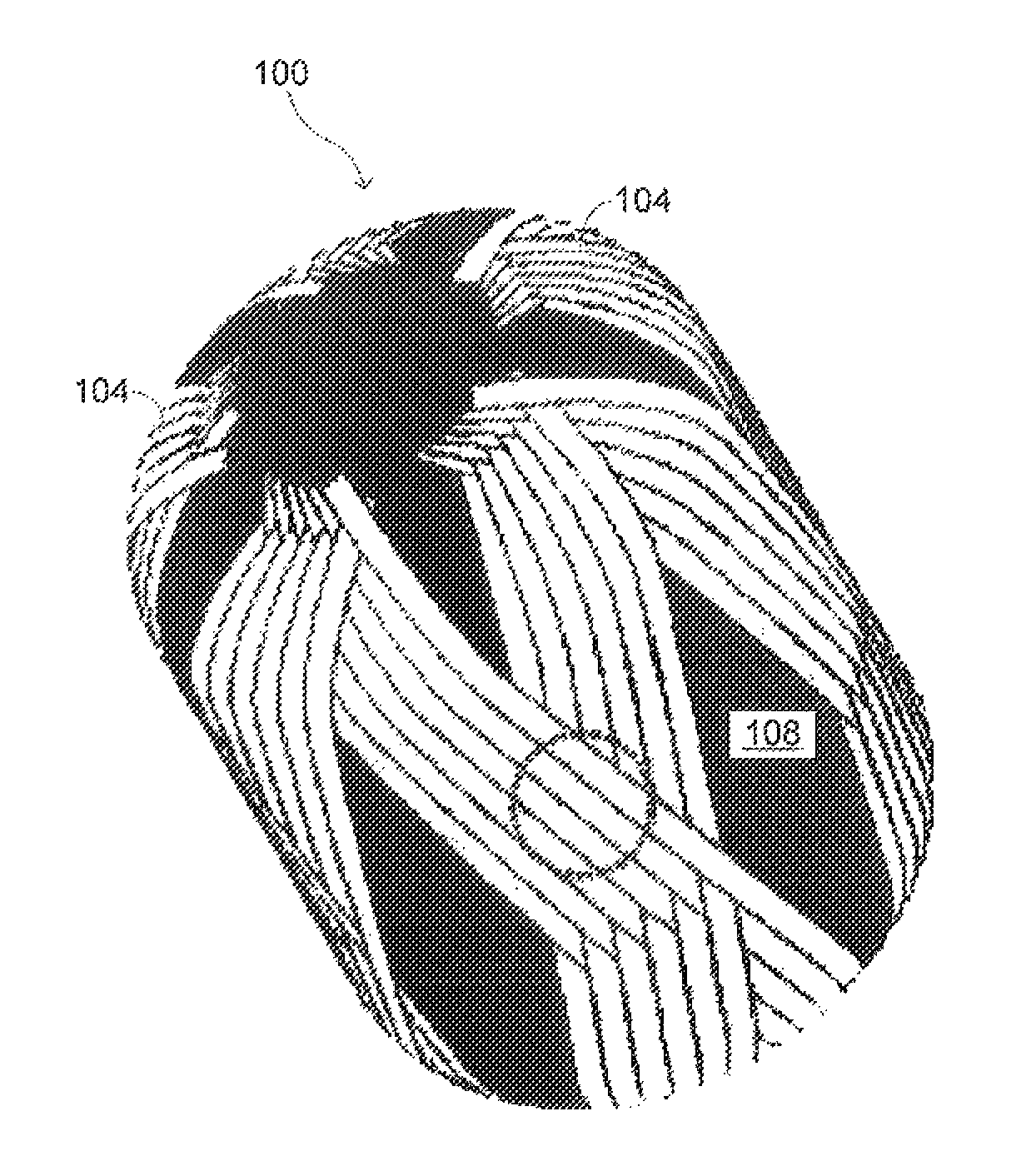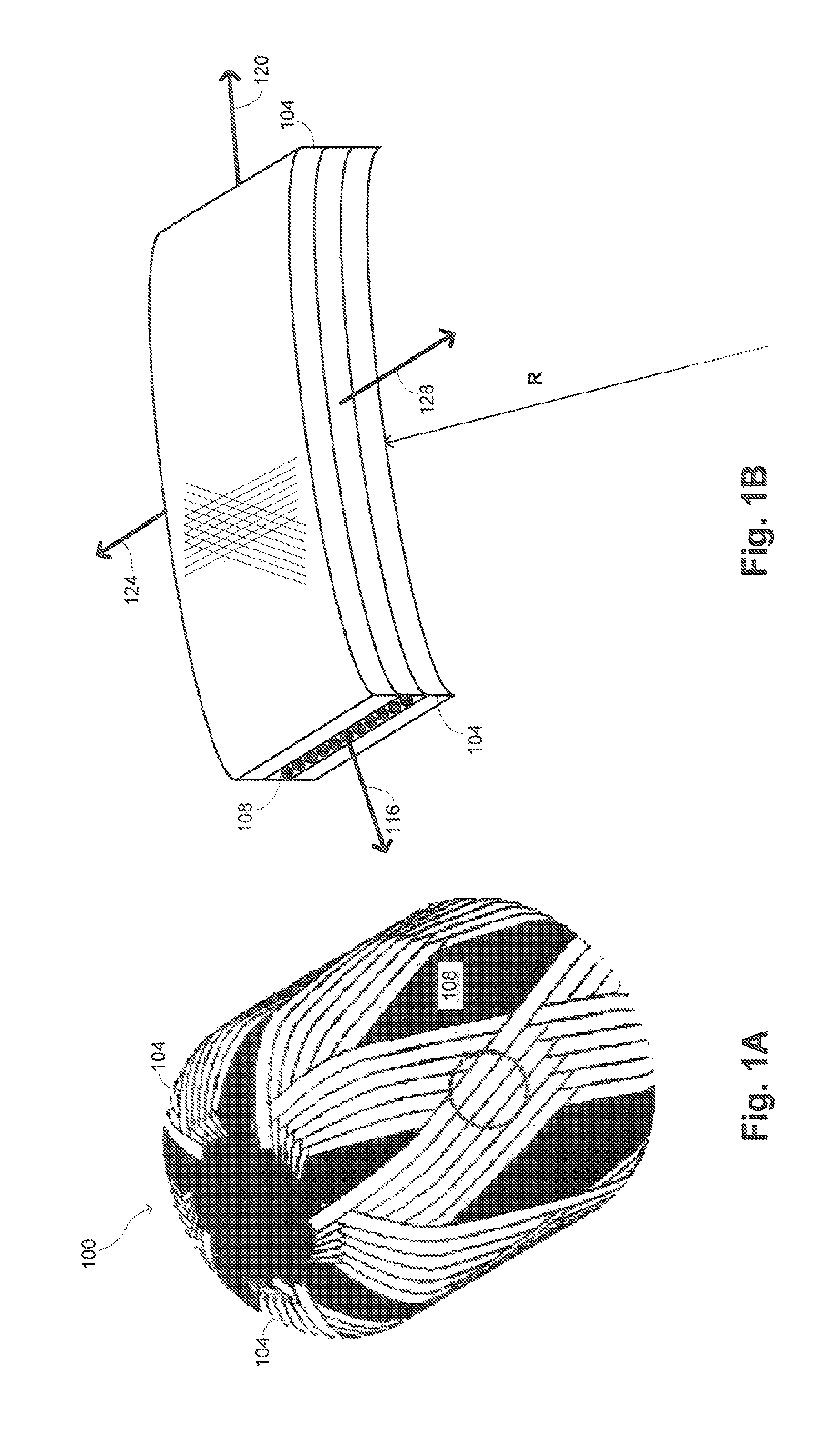Damage and leakage barrier in all-composite pressure vessels and storage tanks
a composite wall and barrier technology, applied in the field of pressure vessels, can solve problems such as leakage of pressurized contents, and achieve the effects of reducing leakage, stiffness and strength of the composite wall, and superior barrier against leakag
- Summary
- Abstract
- Description
- Claims
- Application Information
AI Technical Summary
Benefits of technology
Problems solved by technology
Method used
Image
Examples
example
[0057]In one example, a 6 in. dia.×7 in. long, 1.9-L filament-wound linerless pressure vessel was fabricated without any braided ply. The pressure vessel had a weight of 295 grams and failed by leakage, showing a visible spray of water at the knuckle area, at 1000 PSI when subjected to hydrostatic pressure. A comparable pressure vessel with two braided plies interspersed between the normal filament-wound layers throughout the dome regions, but not within the cylindrical region of the pressure vessel had a weight of 315 grams and failed by leakage at 2600 PSI when subjected to hydrostatic pressure. Thus, the inclusion of braided plies selectively in the dome regions that increased the weight by 6.7% provided a performance improvement in excess of 150%.
[0058]In another example, a 6 in. dia.×7 in. long, 1.9-L filament-wound linerless pressure vessel was fabricated in two steps and incorporating barrier plies throughout the pressure vessel. First braided barrier plies were formed, impre...
PUM
| Property | Measurement | Unit |
|---|---|---|
| braid angle | aaaaa | aaaaa |
| braid angle | aaaaa | aaaaa |
| braid angle | aaaaa | aaaaa |
Abstract
Description
Claims
Application Information
 Login to View More
Login to View More - R&D
- Intellectual Property
- Life Sciences
- Materials
- Tech Scout
- Unparalleled Data Quality
- Higher Quality Content
- 60% Fewer Hallucinations
Browse by: Latest US Patents, China's latest patents, Technical Efficacy Thesaurus, Application Domain, Technology Topic, Popular Technical Reports.
© 2025 PatSnap. All rights reserved.Legal|Privacy policy|Modern Slavery Act Transparency Statement|Sitemap|About US| Contact US: help@patsnap.com



